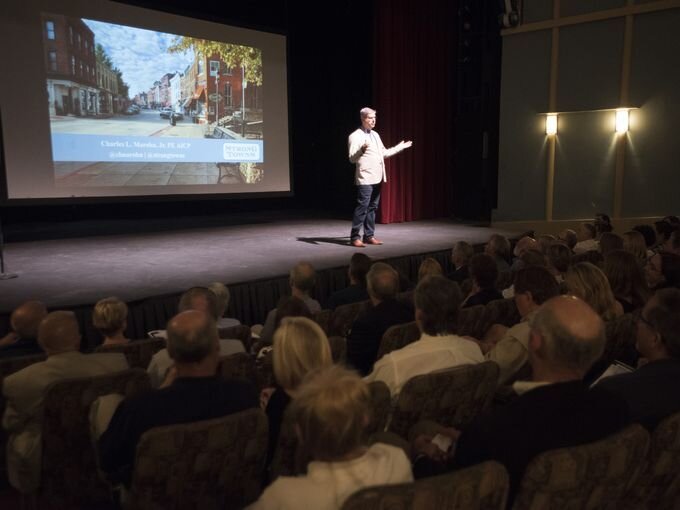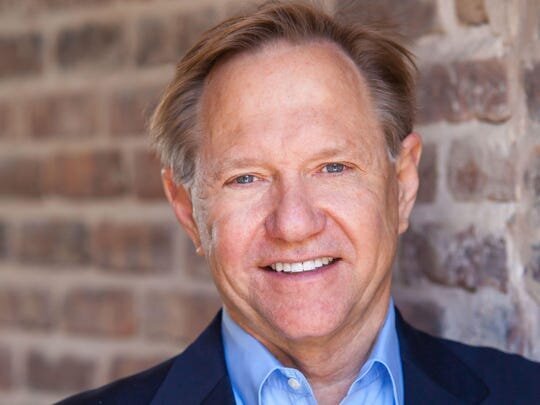A Framework for Thriving: Keep These Four Areas Front and Center as You Move Forward
This is the second in a three-part series by Quint Studer, author of Building a Vibrant Community: How Citizen-Powered Change Is Reshaping America. Read the first part here.
“None of us has the luxury of choosing our challenges. Fate and history provide them for us. Our job is to meet the tests we are presented.”
Federal Reserve Chairman Jay Powell spoke these words late last week in a conversation with David Wessel of The Brookings Institution. I think they are so powerful.
None of us would have chosen to be tested this way. But since it has happened, it’s time to get to work and start tackling these challenges head on. Community leaders are being called to be more thoughtful, bold, and collaborative than we’ve ever been before. It’s time to answer that call. We need to get everyone—government, business leaders, and citizens—engaged in the essential work of moving forward into a future where we won’t just survive, but thrive.
Some of that has to do with positive messaging and deliberately shaping the right culture (which we’ll discuss next week). But a lot of it comes down to our ability to get focused on what really matters. As we discussed last week, there will be a lot of “shiny balls” to distract us. Our job is to not let that happen. We need to put a framework in place for making decisions and resolve to have the discipline to stick to that framework.
Over and over again we see that there are four critical areas that improve quality of life and work together as “gears” to drive a community forward. As you seek to make decisions about the future of your community, you can look at them through this lens:
1. Placemaking (Vibrant Downtown)
Creating a vibrant downtown is pivotal to creating the “sense of place” that attracts talent and investment. This will continue to be true in the future. Yes, people may have gotten accustomed to shopping online, but they’ll still want a great place to go, a place where everybody knows their name. They’ll want great restaurants to dine in, coffee shops where they can reconnect with old friends, cool boutiques and stores.
As you consider how to spend public money, keep placemaking firmly in mind. Use public dollars as a catalyst for private investment downtown or other areas where citizens and visitors tend to gather. Make sure you can show ROI up front. It’s always been true that private investment drives growth. It’s the key to job creation and a strong, sustainable tax base. Right now, as we prepare for the great comeback, we need to let this truth guide us.
2. Economic Development
Small business is the backbone of a strong community. Ask yourself: How can we help our small businesses thrive? Business owners may assume customers will come back when mandates are lifted, but the reality is that for many, things will never return to the old normal. Habits and mindsets will have changed. Owners will need help adapting to the “future normal”—and to do that, we’re going to need each other.
In times of crisis, we can see why having an engaged and galvanized business community is crucial. All businesses are interconnected: When one struggles, there is a domino effect. We need each other for insights, our shared talents and best practices, and our mentoring relationships. More than ever, organizations like chambers are in a unique position to lead. It’s up to them to bring businesses together so they can collaborate, problem solve, and take a leadership role in moving the community forward.
3. Civic Education
Strong Towns president Chuck Marohn speaking at CivicCon. Image source.
The only change that will succeed long-term is citizen-powered change. Without widespread and enthusiastic buy-in, initiatives will fail. It’s crucial that we engage people up front. That means asking, “What do you want the community to look like?” And it means educating them on what they can become and on what it takes to get there. Bring in experts to help people see the way forward. When people “get it,” they get behind it.
In Pensacola we have the CivicCon lecture series, which has proven wildly successful, with more than 300 citizens at each event and more than 5,000 live video views for each session. It shows us citizens will engage when given the right opportunity. Having people together hearing the message at the same time from experts on some of our most pressing community problems has been powerful in many ways. Not only does it promote buy-in, it helps stamp out negativity (as they are armed with good information) and it creates a common language for having good discussions.
4. Education (Early Learning)
A strong talent base is essential to creating a strong community. That begins with a well-trained population—and that begins when citizens are very young. Economist John A. List says the one reliable economic indicator for the long-run vitality of a community is the optimal development of a young child’s brain. This is why it’s so important to treat not just the symptoms (low graduation rates) but also the root causes (low kindergarten readiness, especially in underserved populations).
In Pensacola we’ve partnered with the University of Chicago to ensure that the parents of every baby born in Escambia County get an early intervention aimed at educating them on the brain-building benefits of talking, reading, singing, and playing with infants and young children. And early research is showing that the interventions a) are successful in boosting parent knowledge of infant language and cognitive development, and b) fit into the context of regular maternity care.
An investment in early learning is an investment in your community’s future.
Please check back in next week for our third and final installment, in which we’ll talk about community culture and what local leaders are doing now to collaborate, support each other, and create an optimistic culture in their community.
Cover image via Chris Chatham.
Quint Studer is author of Building a Vibrant Community: How Citizen-Powered Change Is Reshaping America and Wall Street Journal bestseller The Busy Leader’s Handbook: How to Lead People and Places That Thrive. He is founder of Pensacola’s Studer Community Institute, a nonprofit organization focused on improving the community’s quality of life, and Vibrant Community Partners, which coaches communities in building out a blueprint for achieving growth and excellence. Quint speaks and works with communities across the country, helping them execute on their strategic plans, create a better quality of life, and attract and retain talent and investment. He is a businessman, a visionary, an entrepreneur, and a mentor to many. He currently serves as Entrepreneur-in-Residence at the University of West Florida, Executive-in-Residence at George Washington University, and Lecturer at Cornell University.
For more information, please visit www.thebusyleadershandbook.com, www.vibrantcommunityblueprint.com, and www.studeri.org.





In this episode, Abby is joined by Edward Erfurt to discuss the emergence of food deserts in the United States. They talk about the causes of this dilemma and ways that everyday people can address these food shortages in their communities. (Transcript included.)